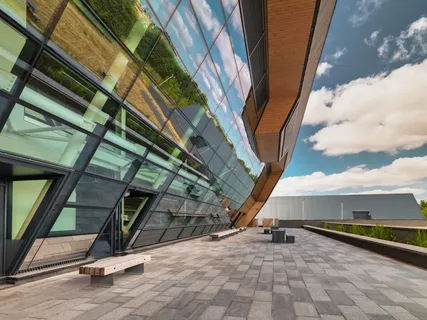In modern architectural design, sustainability and occupant comfort are critical factors. One innovative solution that has gained widespread popularity is the use of louvre systems. These versatile architectural components play a significant role in enhancing energy efficiency and ventilation in buildings. This article explores how louvre systems enhance energy efficiency and ventilation in architecture, highlighting their benefits and practical applications.
What Are Louvre Systems?
Louvre systems consist of angled slats or blades installed on windows, facades, or ventilation openings. These slats are designed to control airflow, light penetration, and privacy while protecting the interior from direct sunlight and adverse weather conditions. Depending on the design, louvre blades can be fixed or adjustable, offering flexibility to optimize building performance.
Enhancing Energy Efficiency Through Louvre Systems
One of the primary ways louvre systems enhance energy efficiency and ventilation in architecture is by regulating solar heat gain. By controlling the amount of direct sunlight entering a building, louvres reduce the reliance on air conditioning systems, leading to significant energy savings. During hot seasons, the angled slats block harsh sunlight while allowing natural light to illuminate the interior, minimizing the need for artificial lighting.
Moreover, louvre systems contribute to better insulation by reducing heat transfer through windows and openings. This helps maintain a stable indoor temperature, reducing heating demands in colder months. As a result, louvre systems contribute to lowering the overall carbon footprint of buildings and promoting sustainable design.
Improving Ventilation with Louvre Systems
Ventilation is vital for indoor air quality and occupant comfort. Louvre systems enhance natural ventilation by facilitating airflow while preventing the entry of rainwater and debris. Adjustable louvre blades can be angled to optimize cross-ventilation, allowing fresh air to circulate freely and stale air to exit efficiently.
This natural ventilation reduces the dependency on mechanical ventilation systems, which are energy-intensive. By harnessing ambient wind and temperature differences, louvre systems maintain a comfortable indoor environment with minimal energy consumption.
Practical Applications in Modern Architecture
Architects and designers integrate louvre systems in various building types, including residential, commercial, and institutional projects. Facade louvres provide aesthetic appeal alongside functional benefits, creating dynamic building exteriors that respond to environmental conditions. In office buildings, louvre systems improve employee comfort by maintaining optimal lighting and air circulation. In residential settings, they offer privacy without compromising ventilation.
Conclusion
In conclusion, understanding how louvre systems enhance energy efficiency and ventilation in architecture is essential for sustainable building design. By controlling sunlight, improving insulation, and promoting natural airflow, louvre systems provide an effective solution to reduce energy consumption and enhance indoor comfort. As architects continue to prioritize green building strategies, louvre systems will remain a valuable element in the pursuit of energy-efficient and ventilated architecture.


